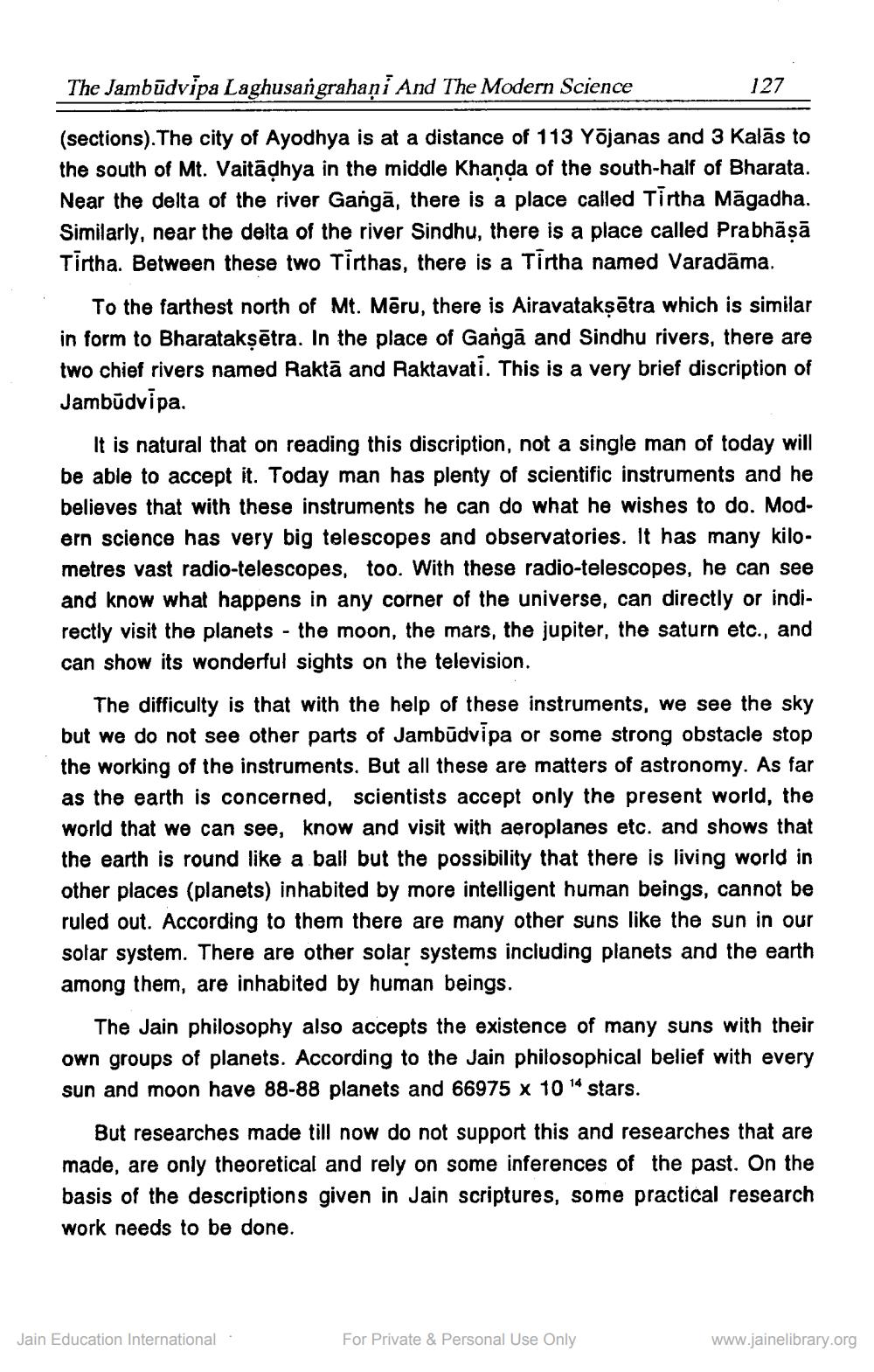________________
The Jambūdvipa Laghusangrahani And The Modern Science
127
(sections).The city of Ayodhya is at a distance of 113 Yojanas and 3 Kalās to the south of Mt. Vaitādhya in the middle Khanda of the south-half of Bharata. Near the delta of the river Gangā, there is a place called Tirtha Māgadha. Similarly, near the delta of the river Sindhu, there is a place called Prabhāṣā Tirtha. Between these two Tirthas, there is a Tirtha named Varadāma.
To the farthest north of Mt. Mēru, there is Airavataksētra which is similar in form to Bharataksētra. In the place of Ganga and Sindhu rivers, there are two chief rivers named Raktā and Raktavati. This is a very brief discription of Jambūdvipa.
It is natural that on reading this discription, not a single man of today will be able to accept it. Today man has plenty of scientific instruments and he believes that with these instruments he can do what he wishes to do. Modern science has very big telescopes and observatories. It has many kilometres vast radio-telescopes, too. With these radio-telescopes, he can see and know what happens in any corner of the universe, can directly or indirectly visit the planets - the moon, the mars, the jupiter, the saturn etc., and can show its wonderful sights on the television.
The difficulty is that with the help of these instruments, we see the sky but we do not see other parts of Jambūdvipa or some strong obstacle stop the working of the instruments. But all these are matters of astronomy. As far as the earth is concerned, scientists accept only the present world, the
e can see, know and visit with aeroplanes etc. and shows that the earth is round like a ball but the possibility that there is living world in other places (planets) inhabited by more intelligent human beings, cannot be ruled out. According to them there are many other suns like the sun in our solar system. There are other solar systems including planets and the earth among them, are inhabited by human beings.
The Jain philosophy also accepts the existence of many suns with their own groups of planets. According to the Jain philosophical belief with every sun and moon have 88-88 planets and 66975 x 10 14 stars.
But researches made till now do not support this and researches that are made, are only theoretical and rely on some inferences of the past. On the basis of the descriptions given in Jain scriptures, some practical research work needs to be done.
Jain Education International
For Private & Personal Use Only
www.jainelibrary.org




